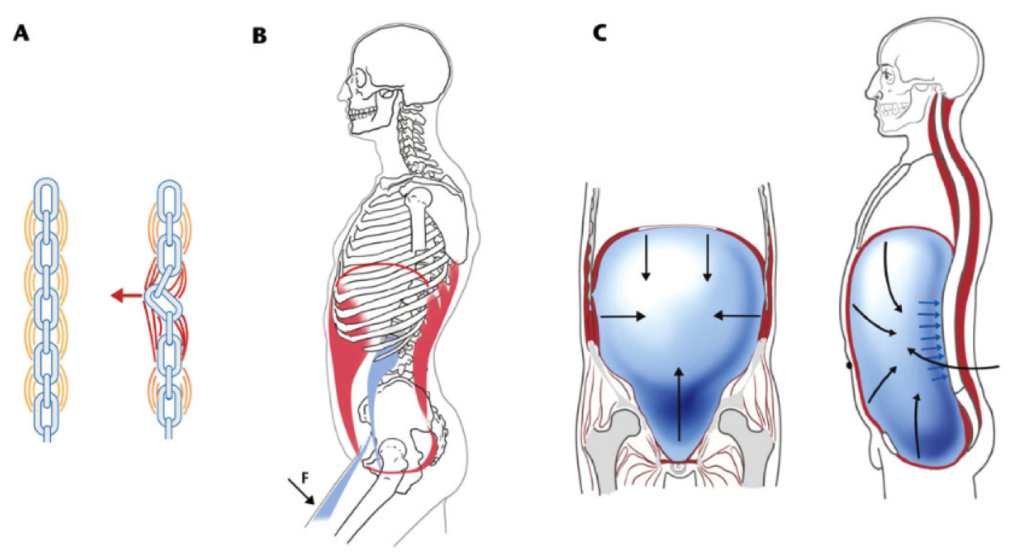The Diaphragm: It Does More Than We Think!

What Does the Diaphragm Do?
The diaphragm, a thin flat muscle, sits just under the lungs. It plays a role in both breathing and core stability. Proper function of the diaphragm allows for visceral mobility, greater lung capacity, pelvic floor activation, as well as core and lumbar spine stability.
As Americans we do a bad job of using this amazing muscle. Instead we breathe with our chest and secondary respiratory muscles. The reason is mostly for vanity. We are told to stand up straight, suck our stomachs in, or keep them constantly braced/tight. This diminishes the function of the diaphragm, immobilizes the abdominal organs, tenses the anterior and posterior spinal stabilizing musculature, and decreases core stability. 
Diaphragm Breathing
The proper way to breathe is diaphragmatically, not purely chest or belly but both in a 360-degree manner. This is way easier said than done for most patients we see in the clinic. For most patients we begin with relaxing the stomach to decrease tension or stop from sucking in. Only then can we start filling the belly like a balloon, 360 degrees in the front, sides, and back. We need to take a page from babies and toddlers. They use the perfect diaphragmatic breathing strategy. Their little bellies look like barrels when they breathe and so should ours!
Proper breathing strategy plays a big factor with back pain. Improper strategies often lead to decreased proprioception, decreased mobility of the lumbar vertebra, reduction in core stability, and altered pain perception. All this occurs, literally just from breathing!
We make sure to assess every patient’s breathing at Elite Sport & Spine. It offers a simple but sometimes not so easy solution, as it comes down to changing a habit we do thousands of times a day. So come in to get your breathing checked out and find out how it relates to your symptoms!
 262-373-9168
262-373-9168



